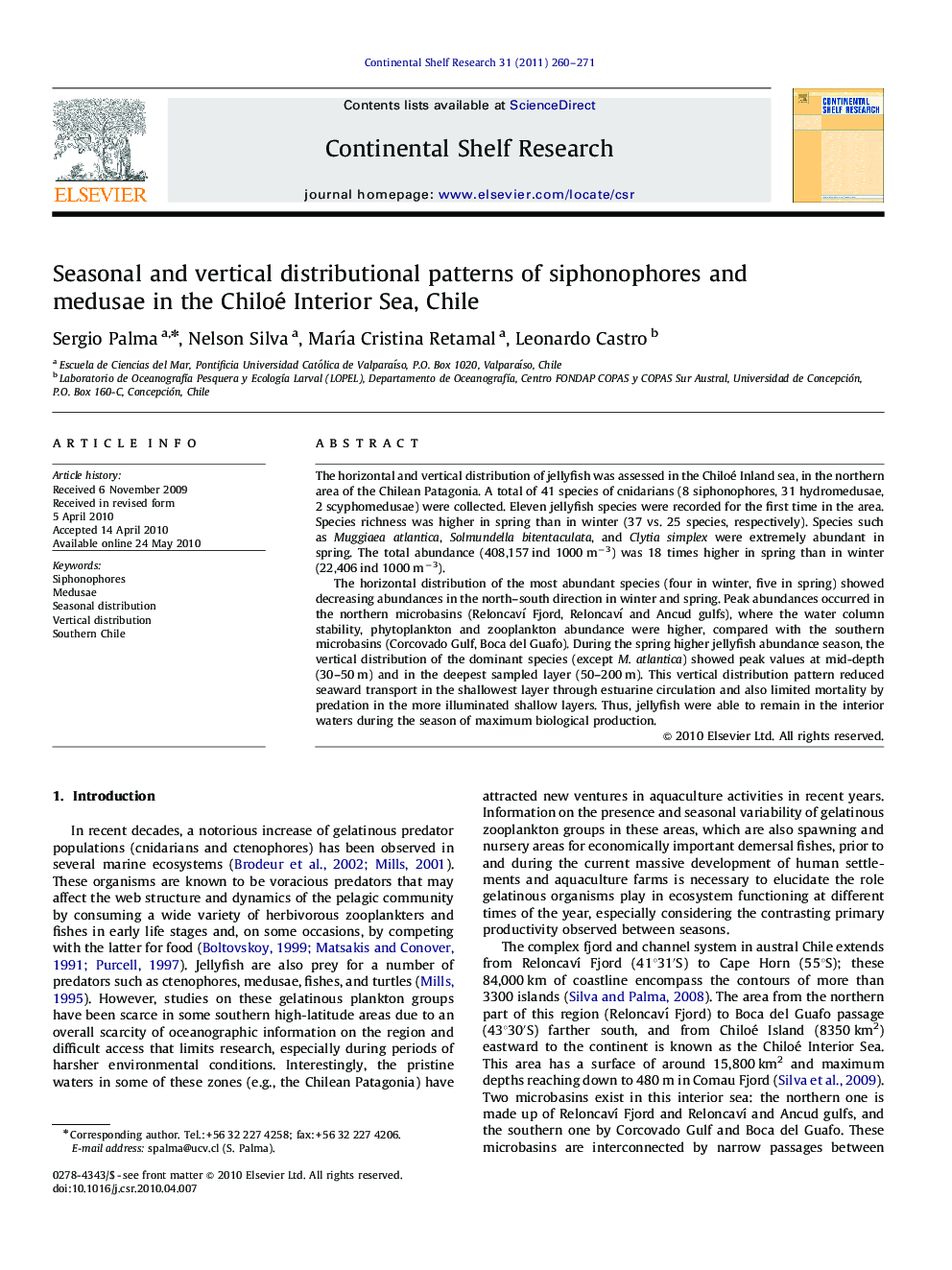| Article ID | Journal | Published Year | Pages | File Type |
|---|---|---|---|---|
| 4532704 | Continental Shelf Research | 2011 | 12 Pages |
The horizontal and vertical distribution of jellyfish was assessed in the Chiloé Inland sea, in the northern area of the Chilean Patagonia. A total of 41 species of cnidarians (8 siphonophores, 31 hydromedusae, 2 scyphomedusae) were collected. Eleven jellyfish species were recorded for the first time in the area. Species richness was higher in spring than in winter (37 vs. 25 species, respectively). Species such as Muggiaea atlantica, Solmundella bitentaculata, and Clytia simplex were extremely abundant in spring. The total abundance (408,157 ind 1000 m−3) was 18 times higher in spring than in winter (22,406 ind 1000 m−3).The horizontal distribution of the most abundant species (four in winter, five in spring) showed decreasing abundances in the north–south direction in winter and spring. Peak abundances occurred in the northern microbasins (Reloncaví Fjord, Reloncaví and Ancud gulfs), where the water column stability, phytoplankton and zooplankton abundance were higher, compared with the southern microbasins (Corcovado Gulf, Boca del Guafo). During the spring higher jellyfish abundance season, the vertical distribution of the dominant species (except M. atlantica) showed peak values at mid-depth (30–50 m) and in the deepest sampled layer (50–200 m). This vertical distribution pattern reduced seaward transport in the shallowest layer through estuarine circulation and also limited mortality by predation in the more illuminated shallow layers. Thus, jellyfish were able to remain in the interior waters during the season of maximum biological production.
